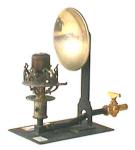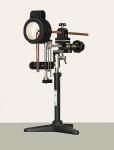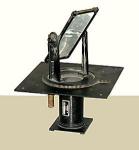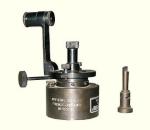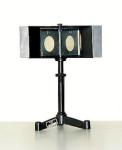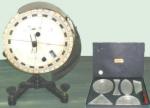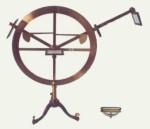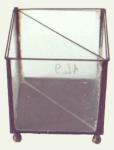Description
The apparatus includes: a paper screen on a wooden frame with a foot that holds it
vertically according to its height and length, a brass foot with a column with a set screw on
which we can fix a darken metallic disk for shadows and half-lights; a cardboard disk with a
central hole for the rectilinear propagation of the light and for the obscura camera, a darken
metallic pole for Rumford’s photometer; a support for three candles placed at the vertexes of
an equilateral triangle.
For the rectilinear propagation and the obscura camera we use the candlestick, the
cardboard disk and the screen.
For the shadows and the half-lights we use the candlestick, the metallic disk and the
screen.
For Rumford’s photometer we use the metallic pole, the screen, a candle and a group
of four candles.
|
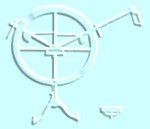

 Menu
Menu
